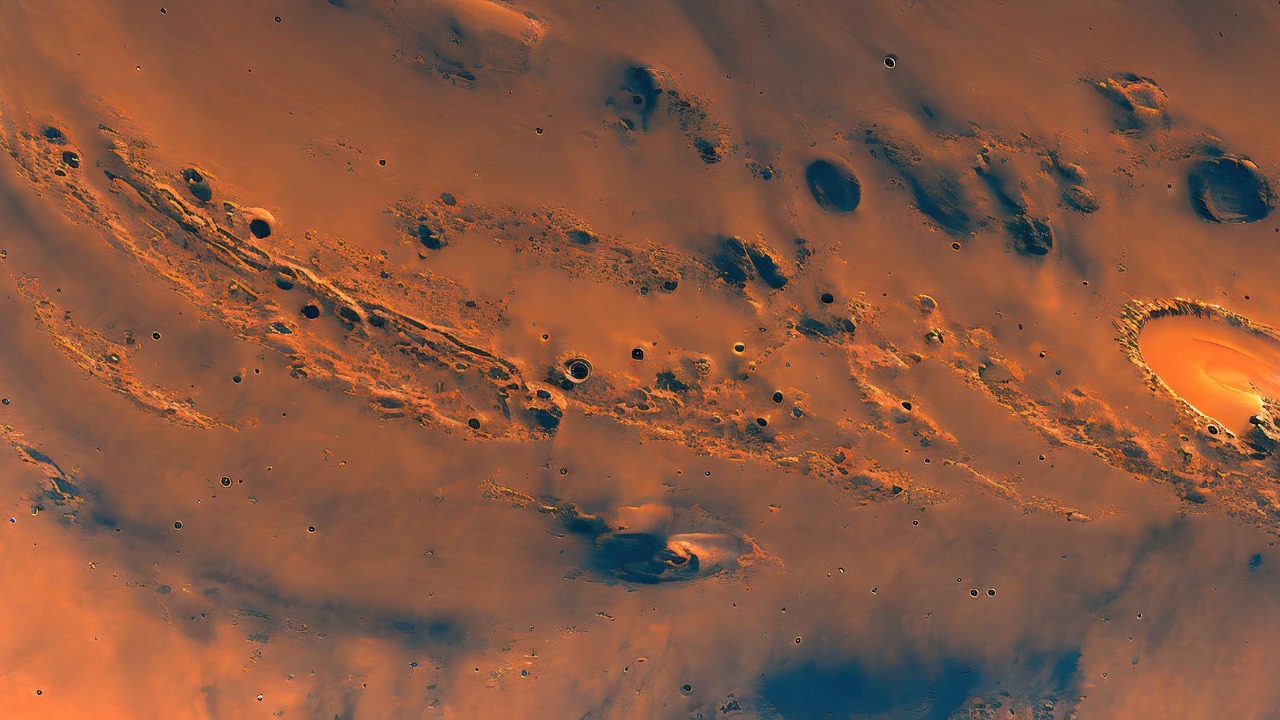
Recent discoveries suggest the presence of a hidden ocean beneath Mars’ surface, sparking excitement about the possibility of life on the Red Planet. The prospect of water existing in liquid form beneath the Martian crust opens up new avenues for astrobiological research. Understanding the nature of this subsurface ocean and its potential to host life could revolutionize our approach to planetary exploration and the search for extraterrestrial organisms.
The Discovery of Mars’ Hidden Ocean

In a remarkable breakthrough, scientists analyzing data from Mars orbiters have uncovered compelling evidence pointing to a vast subsurface ocean beneath the Red Planet’s surface. The key to this discovery lies in the analysis of radar signals, which have detected reflections indicative of liquid water. These reflections were observed beneath Mars’ southern polar ice cap, suggesting the existence of a body of water comparable in size to Earth’s Great Lakes. The importance of this finding cannot be understated, as it opens up the possibility of an environment that could support life.
Researchers have utilized advanced radar techniques to interpret the data, which suggest the presence of an enormous subsurface ocean. This body of water is thought to be located beneath layers of ice and rock, and its existence is inferred from anomalies in the radar signals that align with what one would expect from liquid water. The radar reflections point to a region beneath Mars’ southern ice cap, which not only hints at a more dynamic hydrological past for Mars but also raises questions about the current state of the planet’s climate and geological activity.
Conditions Supporting Life in Subsurface Oceans

To understand the potential for life in Mars’ hidden ocean, scientists draw parallels with Earth’s subsurface ecosystems. On our own planet, life thrives in places once thought inhospitable, such as deep oceanic hydrothermal vents. These ecosystems rely on chemosynthesis rather than photosynthesis, using chemical reactions to produce energy. This suggests that, even in the absence of sunlight, life could potentially exist in Mars’ subsurface ocean if similar conditions are present.
Hydrothermal vents could play a crucial role in sustaining life beneath Mars’ surface. On Earth, these vents provide an energy source for microbial communities, offering a refuge in otherwise barren environments. If Mars’ hidden ocean has similar geothermal activity, it could harbor life forms adapted to such conditions. Additionally, the presence of salts and minerals in the Martian ocean might help maintain liquid water by lowering the freezing point, thereby creating a more stable environment for microbial life to thrive. These salts and minerals could also provide essential nutrients needed for life, further enhancing the habitability of the Martian subsurface.
Challenges in Confirming the Presence of Life

While the discovery of a hidden ocean on Mars is thrilling, confirming the presence of life presents significant challenges. One of the primary obstacles is the technological and logistical difficulty of drilling through the Martian surface to access the ocean. Current technology does not yet allow for such deep and precise drilling on Mars, and developing the necessary equipment will require years of research and development. Additionally, the harsh environment of Mars poses further challenges, necessitating robust and resilient technology that can withstand extreme conditions.
Contamination concerns also loom large in the quest to explore Mars’ subsurface. Strict planetary protection protocols must be followed to prevent Earth-based organisms from contaminating Mars, which could compromise the search for indigenous Martian life. These protocols require that any equipment sent to Mars be sterilized to a high degree, a challenging task that adds complexity to mission planning and execution. Furthermore, detecting microbial life within the subsurface ocean is fraught with the risk of false positives. Interpreting data accurately will require sophisticated techniques and collaboration among scientists to ensure that any signs of life are genuine and not artifacts of the investigation process.
Implications for Future Mars Missions

The potential existence of a hidden ocean beneath Mars’ surface has far-reaching implications for future missions to the Red Planet. Designing missions capable of probing beneath the Martian crust is now a priority. This involves developing new technologies and strategies to penetrate the ice and rock layers that shield the subsurface ocean. Such missions would need to be equipped with advanced drilling and sampling tools, as well as instruments capable of analyzing the chemical composition and potential biological signatures of the water.
International collaboration is crucial in advancing astrobiological research on Mars. The complexity and cost of missions aimed at exploring the Martian subsurface necessitate cooperation among space agencies worldwide. By pooling resources and expertise, the global scientific community can develop more effective strategies and technologies to explore Mars’ hidden ocean. Furthermore, manned missions to Mars could incorporate subsurface exploration into their objectives, providing a unique opportunity to study the planet’s geology and potential for life firsthand. This would mark a significant step forward in our understanding of Mars and its place in the solar system.
The Broader Impact on Astrobiology

The discovery of a hidden ocean on Mars compels scientists to reassess the criteria for habitability both within our solar system and beyond. Traditionally, the search for life has focused on planets and moons with surface water; however, this finding expands the potential for life to exist in subsurface environments. This has implications for the search for life on other icy bodies, such as Jupiter’s moon Europa and Saturn’s moon Enceladus, which are also believed to harbor subsurface oceans.
The possibility of a second genesis of life on Mars would have profound implications for our understanding of life’s universality. If life is found to have originated independently on Mars, it would suggest that life could be a common occurrence in the universe, arising wherever conditions are favorable. This would fundamentally alter our perspective on the nature of life and its distribution across the cosmos. Moreover, exploring Mars’ hidden ocean and its potential for life can provide valuable insights into the evolution of life on Earth, offering a comparative perspective that enriches our understanding of biology and planetary science.